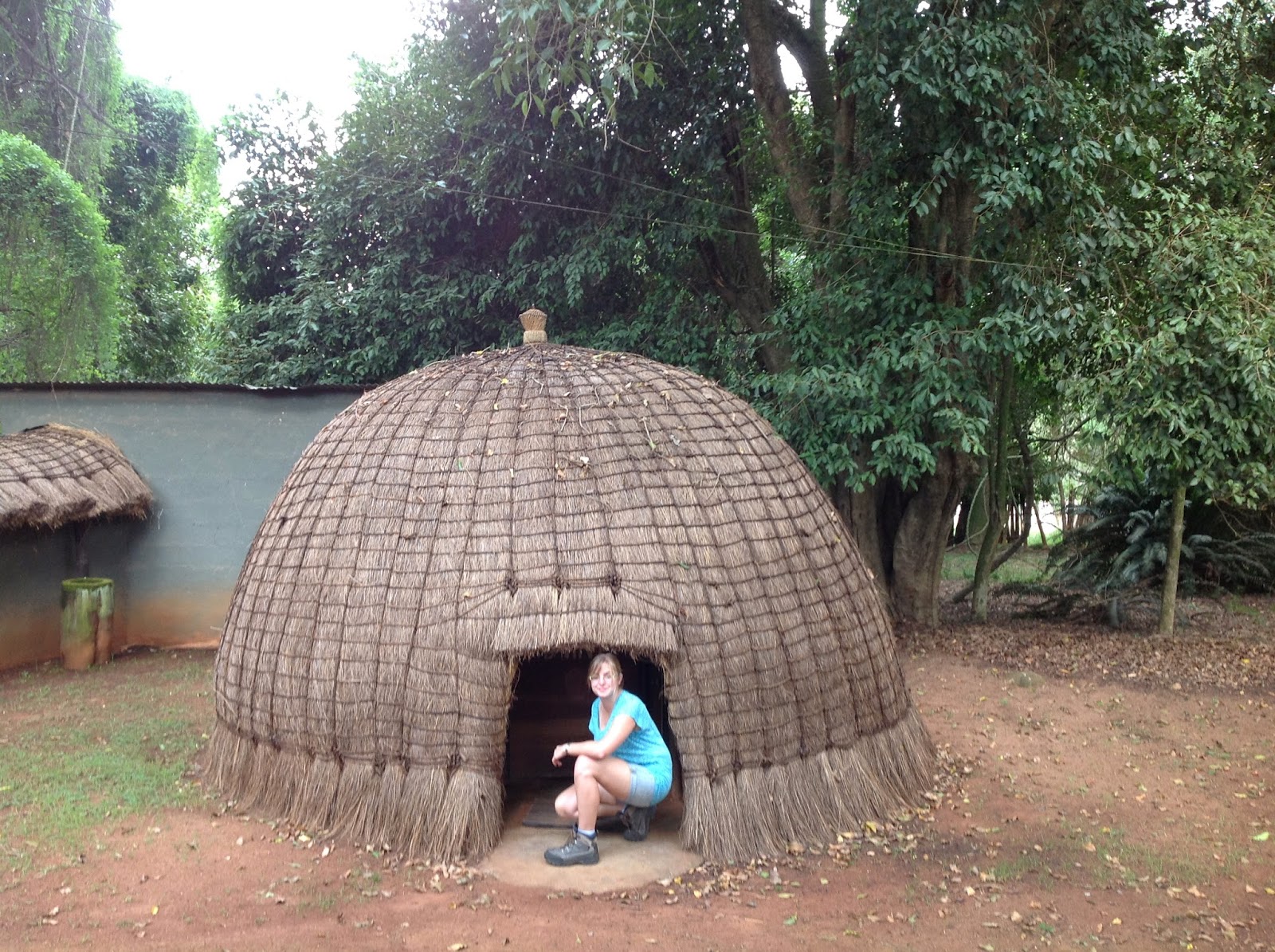In February, my student Kathleen invited my students and me to join her for a weekend in Swaziland. For those of you who didn't know this was a country (this includes the customs agent at JFK on my most recent USA sojourn), I refer you to the map below. As you can see, Swaziland (aka Dirty Swaz) is a small country approximately 120 miles long and 80 miles across that is surrounded almost entirely by South Africa.
The flag above and the Royal Seal (top of page) reflect the strong Bantu origins of the Swazi people, who moved into the area somewhere around 1600AD. The Lion on the Royal Seal represents the King, or "Ingwenyama", and the Elephant represents the Queen Mother, or Indlovukati (the latter translates to "She-Elephant"!).
Swaziland is one of the last seven absolute monarchies in the world (I'll bet you can't name the other six), and King Mswati III features prominently on the currency, along with other Swazi economic bastions such as cows, corn, and pineapples. The currency is pegged to the South African Rand (1:1), and with "God as our source," appears in no danger of Zimbabwean-style collapse anytime soon.
Crossing the Swazi border isn't the fearsome experience you might predict given how daunting it is to get into the USA these days. Out of respect for national security I didn't photograph the rather small but efficient border post. However, ramshackle enterprises like this one extend outwards in either direction from the border crossing for a mile or so, giving the whole enterprise a relaxed, 'African' vibe.
Kathleen's place turned out to be a tidy little trailer on the farm of her boyfriend Phil and his mother Isabelle. Above, the farmhouse with sections that date to the early 1900s. Below, Kathleen's stoep. From left: yours truly, Isabelle, Kathleen, Phil, Blair.
More traditional Swazi homes are made of bundled grass in this typical beehive shape.
As payment for a weekend of fun and adventure, Kathleen asked us all to deliver talks about the palaeontology of southern Africa to the Natural History Society of Swaziland. Their monthly meeting takes place at the opulent Mountain Inn in the capitol city of Mbabane (population 30,000; sister city to Fort Worth). Clockwise from top left: The Mountain Inn hosts Swazi's most popular Irish bar, O'Reilly's; A view from the Mountain Inn showing the lights in the valley below; Kimi tells the Society about Massospondylus, Kathleen tells the Society about palaeontology in southern Africa.
Swaziland is host to the famous southern african music festival "Bushfire" (http://www.bush-fire.com/), held annually at a beautiful music venue called, perhaps unimaginatively, "House on Fire". The venue is directly across from Kathleen's house, and features strange art, hippy stonework, and so forth.
Swaziland is also known for its waxwork. This candle (!) almost came home with me.
Pineapple is an important cash crop and vast fields of pineapple plants like this one are a common sight.
The country is also well-known for its game reserves and parks. Here I'm swimming in pristine water coming out of the Mdzimba Mountains. Up at the base of the waterfall it's too cold for crocodiles, but in the lower stretches of the river, swimmers are strongly cautioned to watch out for what are known locally as "Flat Dogs" (see below)!
Of course, there's no swimming without a huge barbecue lunch and beer!
These Vervet Monkeys are not to be trusted...one of them made a daring raid on our lunch spot and escaped with all of our rolls. We were left eating chicken with our hands.
Other less pestiferous members of the wildlife community include these mound building termites...
...and this blue-headed agama, a South African (and Swazi) endemic.
We ended our Swazi trip with a visit to Ngwenya Glass, an amazing local success story. Originally opened by a charitable organization called Swedish Aid in the late 1970s, the shop had gone bankrupt by the mid 1980s. It was purchased by a South African family who now produce a full range of stemware and decorative objects. All of the glass in the shop is recycled from local sources (the shop pays school kids to clean up their neighborhoods in exchange for glass soda bottles), the furnaces run partially on recycled motor oil, and items are shaped and packed in recycled newspaper. But what's coolest is that their mascot is a "flat dog"!

























No comments:
Post a Comment